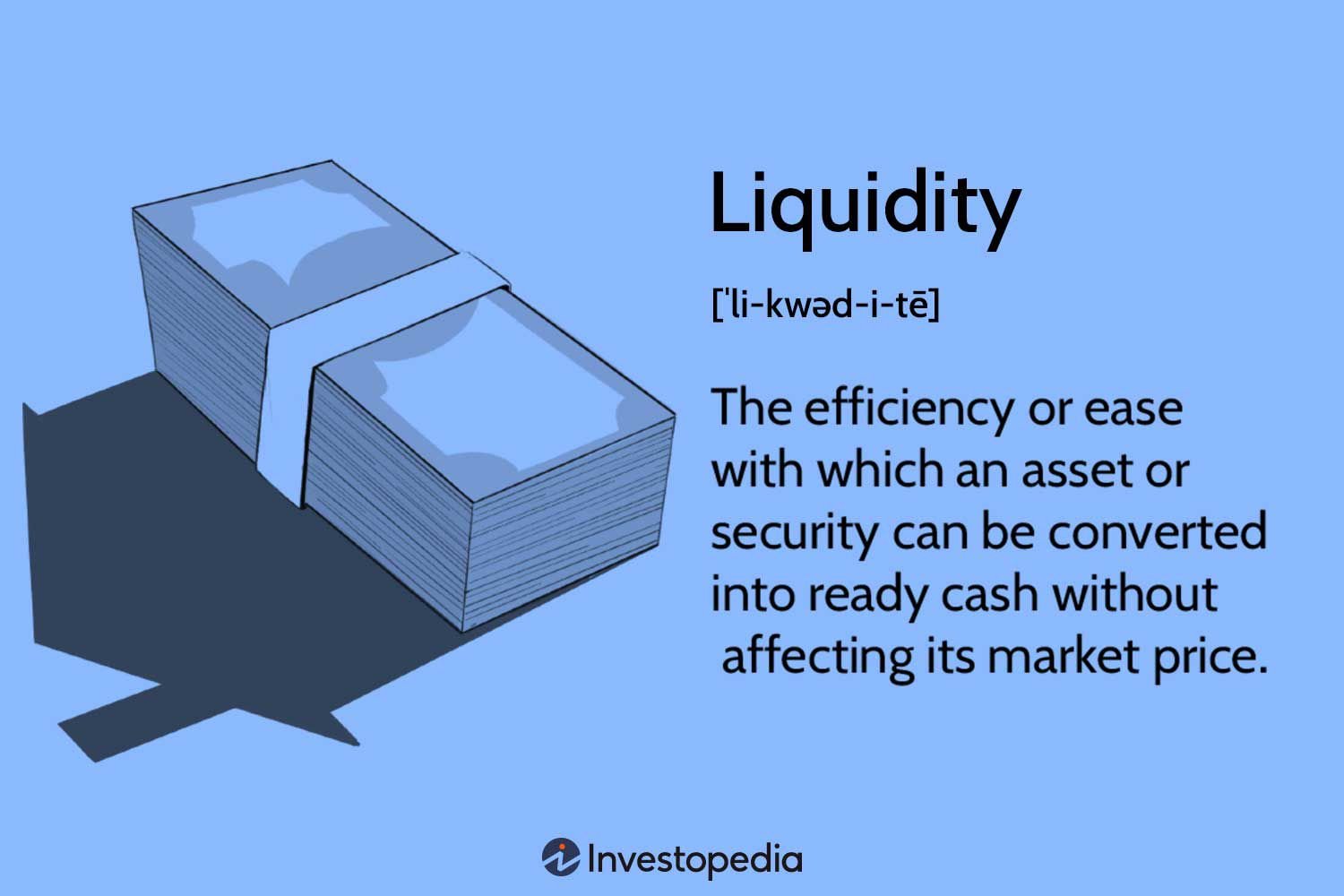Liquidity in markets is a fundamental concept that shapes the dynamics of financial systems. But what does it truly mean? To put it simply, understanding the concept of liquidity in markets involves comprehending how easily assets can be bought or sold without causing significant price movements. Essentially, it’s about the ease of converting an asset into cash. In this article, we will delve into the intricacies of liquidity, exploring its importance, factors influencing it, and how it impacts various market participants. So, let’s embark on this journey of unraveling the concept of liquidity in markets and gain valuable insights into this vital aspect of finance.
Understanding the Concept of Liquidity in Markets
What is Liquidity?
Liquidity is a fundamental concept in financial markets that refers to the ease with which an asset can be bought or sold without causing significant price changes. It is a measure of how quickly and efficiently an investor can convert an asset into cash without affecting its market value. In simple terms, liquidity is the level of activity in a market and determines how easy it is to trade an asset.
The Importance of Liquidity
Liquidity plays a vital role in financial markets for several reasons:
1. Efficient Pricing: Liquidity ensures that prices in a market reflect the true value of an asset. When there is high liquidity, the bid-ask spread (difference between buying and selling prices) tends to be narrow, reducing trading costs and improving price efficiency.
2. Market Stability: Adequate liquidity provides stability to financial markets by absorbing large buy or sell orders without significantly impacting prices. It helps prevent excessive volatility and ensures smooth functioning of the market.
3. Investment Opportunities: High liquidity allows investors to enter or exit positions easily, enabling them to capitalize on profitable opportunities. It provides flexibility and reduces the risk of being stuck in illiquid assets during unfavorable market conditions.
4. Risk Management: Liquidity is crucial for risk management purposes. Investors can diversify their portfolios and easily adjust their positions in response to changing market conditions when there is sufficient liquidity. It allows for more effective hedging and reduces the overall risk exposure.
Measuring Liquidity
To understand and analyze liquidity in markets, various metrics and indicators are used. Here are some commonly used measures:
1. Trading Volume
Trading volume indicates the total number of shares, contracts, or units of an asset traded over a specific period. Higher trading volumes generally indicate greater liquidity as more market participants are actively buying and selling the asset. It is an essential measure to assess the overall market activity and liquidity.
2. Bid-Ask Spread
The bid-ask spread is the difference between the highest price a buyer is willing to pay (bid) and the lowest price a seller is willing to accept (ask) for an asset. A narrow bid-ask spread indicates high liquidity as there is minimal difference between buying and selling prices, making it easier to execute trades.
3. Market Depth
Market depth measures the quantity of buy and sell orders available at different price levels in the order book. A deep market with a significant number of orders at different price levels indicates higher liquidity, as there are more participants willing to buy or sell the asset.
4. Slippage
Slippage refers to the difference between the expected execution price of a trade and the actual price at which it gets executed. In a liquid market, slippage is minimal as there is a higher chance of executing trades at the desired price. Higher slippage is usually observed in illiquid markets where there are fewer buyers and sellers.
Factors Affecting Liquidity
Liquidity in markets is influenced by various factors, including:
1. Market Participants
The number and types of participants in a market can significantly affect liquidity. More participants, such as individual investors, institutional traders, market makers, and high-frequency traders, enhance liquidity by increasing the number of potential buyers and sellers.
2. Market Size
The size of the market and the total value of the assets traded play a role in determining liquidity. Larger markets with higher trading volumes typically have better liquidity compared to smaller markets.
3. Volatility
Volatility refers to the degree of price fluctuations in a market. Higher volatility can reduce liquidity as market participants may become more cautious and reluctant to trade. However, some traders may actively seek opportunities in volatile markets, leading to increased liquidity.
4. Economic Conditions
Economic conditions affect market liquidity. During periods of economic instability or financial crises, liquidity can dry up as investors become risk-averse and reluctant to participate in the markets. Conversely, stable economic conditions often lead to higher liquidity levels.
The Role of Liquidity Providers
Liquidity providers play a crucial role in maintaining liquidity and efficient market functioning. They are market participants, often institutional investors or specialized firms, that buy and sell assets to ensure there is always a ready market for them. Here are some examples of liquidity providers:
1. Market Makers
Market makers are participants that provide liquidity by continuously quoting bid and ask prices for specific assets. They actively buy and sell assets, even in the absence of other willing buyers or sellers, to ensure liquidity in the market. Market makers profit from the bid-ask spread.
2. Specialists
Specialists are liquidity providers typically found in exchange-traded markets. They maintain an orderly market for specific securities by buying or selling the security using their own inventory when there is an imbalance in supply and demand.
3. High-Frequency Traders
High-frequency traders (HFTs) are sophisticated trading firms that use advanced algorithms and high-speed connections to execute trades within fractions of a second. They provide liquidity by constantly trading in and out of positions, capturing small price discrepancies.
Liquidity and Market Efficiency
Liquidity and market efficiency are closely related. An efficient market is one where prices quickly adjust to new information, and assets are readily tradable at fair values. Here’s the connection between liquidity and market efficiency:
– Liquidity enhances market efficiency by allowing for quick and accurate price discovery. When assets are easily tradeable, market participants can quickly react to new information by buying or selling the assets, leading to efficient price adjustments.
– Efficient markets attract more participants, increasing liquidity further. As the number of buyers and sellers increases, liquidity improves, resulting in better market efficiency.
– Inefficient markets with low liquidity can be prone to manipulations and distortions. Without enough market participants and trading activity, prices may not reflect true asset values, leading to potential inefficiencies.
Understanding the concept of liquidity is vital for investors, traders, and regulators in financial markets. Liquidity influences market stability, pricing efficiency, investment opportunities, and risk management. By measuring liquidity through trading volume, bid-ask spread, market depth, and slippage, market participants can assess market conditions and make informed decisions. Various factors, including market participants, market size, volatility, and economic conditions, affect liquidity. Liquidity providers, such as market makers, specialists, and high-frequency traders, play a crucial role in maintaining liquidity and efficient market functioning. Ultimately, liquidity and market efficiency go hand in hand, ensuring fair prices and a smooth trading experience for investors.
What is liquidity?
Frequently Asked Questions
Frequently Asked Questions (FAQs)
What is liquidity in markets?
Liquidity in markets refers to the ease and speed at which assets can be bought or sold without significantly impacting their prices. It is a measure of how quickly an investment can be converted into cash.
Why is liquidity important in markets?
Liquidity is vital in markets as it ensures the efficient functioning of buying and selling activities. It allows investors to enter or exit positions with minimal price disruption, reduces trading costs, and provides confidence in the overall market stability.
How is liquidity measured in financial markets?
Liquidity in financial markets is commonly measured through various indicators such as bid-ask spreads, trading volumes, and open interest. These metrics help assess the depth and ease of trading in a market.
What factors affect the liquidity of a market?
Several factors can influence the liquidity of a market, including trading volume, market depth, transaction costs, regulations, economic conditions, and investor sentiment. Changes in any of these factors can impact the liquidity levels of a market.
What are the benefits of high liquidity in markets?
High liquidity in markets provides numerous advantages, including better execution of trades, reduced price volatility, enhanced price discovery, increased market efficiency, and improved investor confidence. It also enables more efficient capital allocation.
What are the risks associated with low liquidity in markets?
Low liquidity in markets increases the risk of price manipulation, wider bid-ask spreads, reduced trading opportunities, and potential difficulty in exiting positions. It can lead to increased market volatility and make it harder to accurately value assets.
How does liquidity impact different financial instruments?
Liquidity affects different financial instruments in various ways. Highly liquid instruments such as major currencies and actively traded stocks tend to have tighter spreads and lower transaction costs. Less liquid instruments like certain bonds or small-cap stocks may have wider spreads and higher trading costs.
How can market participants enhance liquidity in markets?
Market participants can contribute to enhancing liquidity by providing liquidity themselves, participating actively in trading, using limit orders, improving market-making activities, and promoting transparency. Additionally, market regulations that ensure fair and efficient trading practices can also foster liquidity.
Can liquidity in markets change over time?
Yes, liquidity in markets can change over time due to various factors. Market conditions, economic events, changes in regulations, investor behavior, and shifts in supply and demand dynamics can all impact the liquidity levels of a market.
Final Thoughts
Understanding the concept of liquidity in markets is crucial for investors. Liquidity refers to the ease with which an asset can be bought or sold without causing a significant change in its price. In liquid markets, there is a high volume of trading activity, allowing investors to enter or exit positions quickly. Liquidity plays a vital role in determining the efficiency and stability of financial markets. It facilitates price discovery and ensures that investors can readily convert their assets into cash. By grasping the concept of liquidity, investors can make informed decisions and mitigate potential risks. Overall, understanding the concept of liquidity in markets is essential for navigating the complexities of the financial world.



